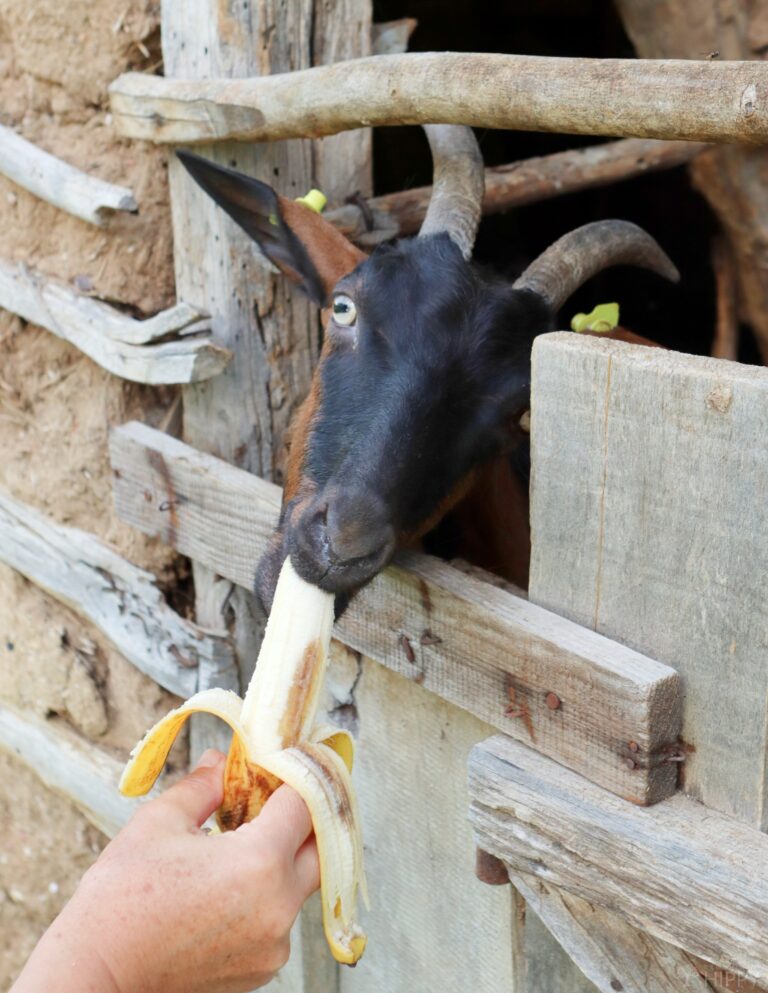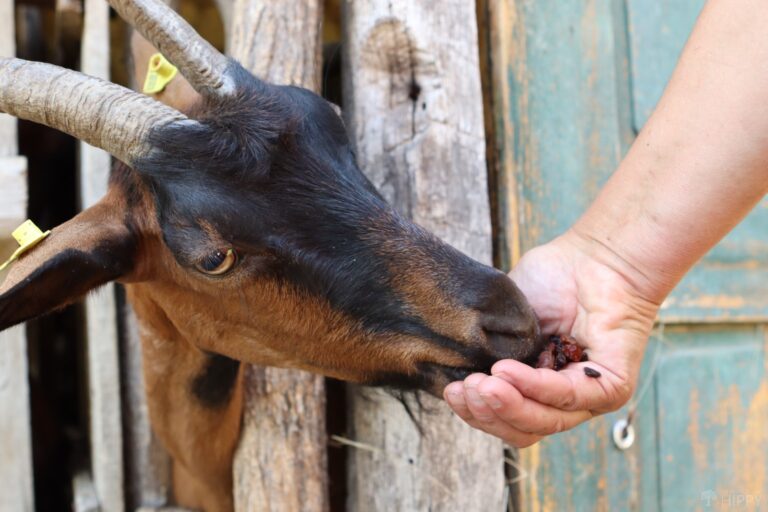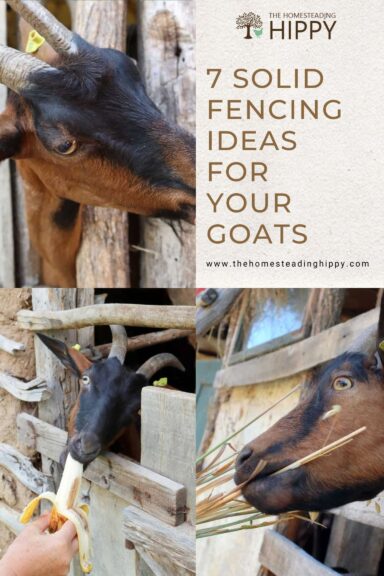Ask anyone who has kept goats for any length of time and they will likely tell you that the best and worst day of their life is the day they made a decision to start keeping these mischievous little critters.
Don’t get me wrong, goats are great, and they can provide you with milk, meat, hair and more, but out of all the livestock species you might pitch in with, goats are certainly the most difficult to keep contained. They’re incredibly curious, expert climbers, able jumpers and generally just troublesome and escapes are very common if you’re fencing isn’t up to the task.

To help keep your goats from jail breaking on you, I’m bringing you a list of seven solid fencing options that are proven to keep goats in place. No matter what your situation, budget and property looks like, at least one of these is bound to work.
No Matter the Fence, it Must Be Tall Enough and Low Enough
Really quick, before we get to the list, no matter what fence you choose it must be both tall enough and set up low enough to contain your goats.
Tall? That’s easy enough to explain. I just said above, and you likely already know, that goats are extremely able jumpers and climbers. As a rule of thumb, your fence needs to be no shorter than 4 feet tall and preferably closer to 5 feet if you want a good chance of keeping these little rascals contained.
But low enough, what does that mean? Exactly what it says: your fence must be low, potentially even partially buried, to prevent goats from wriggling under it, digging under it or slipping under it via a washout or other low point on the fence line.
You might scoff at that if it hasn’t happened to you, but take it from someone who’s been through it, these miscreants will seize any opportunity to gain freedom.
Keep your property layout, and general terrain, in mind as you choose from the fence types below.
Wood (Pickets, Panels, Slat, Etc.)
When it comes to traditional, proven fencing, it’s hard to beat wood no matter what style it comes in.
While it’s adaptable, friendly, ecologically sound and generally easy to work with, the downsides are that it requires a fair bit of upkeep and some designs just aren’t suitable for containing goats.
But if you want to go with wood, particularly if you have access to a good supply already or can get it cheaply, there’s no reason not to.

You can use tall wood pickets, privacy type fencing, wood panels, slats, rails or any other type as long as you keep in mind that it must be high enough and low enough to keep your goats contained as detailed above. Obviously, it also cannot have any gaps in it that are large enough for the animals to wriggle through.
Something else to keep in mind is that wood tends to loosen up considerably over time, necessitating fairly regular checking, repairs and if necessary, replacement. A single loose board might be all it takes to let your goats get away from you!
Welded Wire
Welded wire fencing is one of the most common and affordable types used for containing livestock of all kinds, and with good reason. It offers good attributes of easy handling and building, availability, affordability and versatility.
You can quickly deploy this stuff anywhere it’s needed on a temporary or permanent basis, and it’s a pretty simple thing to build a substantial fence yourself with it.
But welded wire does have some significant downsides, with the most prominent being it just isn’t that durable especially if you have larger breed goats or if your goats are really rough on their surroundings. And I hate to break it to you; most goats tend to fall into that category!
Even though welded wire sounds like it would be as hard as nails, being welded and all, the truth is that each individual weld is tiny with a very small surface area, and as the wires flex and warp from repeated impacts they tend to pop loose.
When that happens, gaps are created. The other downside is that loose wires can be a serious safety hazard to your goats, either stabbing them or wrapping around them.
All in all, not a bad option for goats that are relatively mild-mannered or small but think twice before employing it for known escapees.
Woven Wire
If you like the idea of welded wire but just can’t trust the lack of durability, woven wire is going to be a good choice for you.
Woven wire is indeed a highly effective fencing option and has many of the same good qualities as welded wire: mainly that it’s easy to handle and build with, adaptable and modestly price compared to many other fencing options.
The best part is that due to the nature of its construction woven wire will only break after repeated, severe bending of the wire, corrosion or some other majorly destructive event.
Goats can press on it, ram it, head butt it and pull on it all they want, and this stuff won’t buckle although you’ve got to do your part and make sure it can’t be pulled off your posts entirely, or the posts pushed over.
The only downside, if it has any, is that it is significantly more expensive than welded wire. But, you know what they say, you get what you pay for, and in the case of woven wire it’s definitely true.
Wood + Wire
Sometimes combining two different technologies is the way to go, and for my money, wood-and-wire fencing is a great option.
Wood fencing and wire can be combined to provide a great combination of strength, versatility and affordability, and it’s especially attractive compared to closing a very large parcel with wood alone.
One of the most popular and proven wood-and-wire fence types is what is known as three-board: Three wooden rails between each post hold up lengths of welded wire panels.
Now, I said above that welded wire didn’t have a great reputation for durability, but when you back it up with wooden rails it greatly reduces the likelihood that your goats can bend it enough to start breaking the individual welds loose.
This is a labor-saving option compared to building an all wood fence, and a performance upgrade compared to going with welded wire alone.
Likewise, this is a fine way to go about things if you have a little bit of wood you need to use up in addition to some kind of wire fencing.
Chainlink
When it comes to sheer ruggedness, chainlink is as good as it gets when it comes to metal fencing types. Chainlink is flexible, very unlikely to hurt your goats and absolutely bomb proof as long as the posts holding it up don’t give way.
The downside of chain link is that it, again, tends to be quite ugly if you care about those sorts of things and it’s also quite expensive compared to other metal types of fencing.
Likewise, rolls of the stuff tend to be very big and bulky, and you might need a larger vehicle or a delivery to get it to your property, and then handling it yourself is nowhere near straightforward as you might be thinking.
Even so, if you want the assurance of long-lasting durability and basically zero maintenance outside of an occasional coat of spray enamel, chain link is excellent and even the meanest, gnarliest goats will have a hard time with it so long as it is tall enough.
Cattle Panels
Chances are you know them and love them. Cattle panels basically look just like bigger, beefier welded wire fencing sections. And, in a way, they are.
Also known as feedlot panels, these are designed for versatility, modular construction and significant strength, plenty strong enough to hold in goats. However, you don’t want to make a common mistake in this regard…
There are versions of cattle panels that are especially designed for goats and sheep, but I say stay away from them: I specified cattle panels here, not goat paddles, because goat panels are usually too small to keep goats from jumping over them!
If your goats are cooperative enough to not jump over a goat panel in the first place, you probably don’t need a fence at all!
True cattle panels are more expensive, especially when they’re sitting right next to goat panels at the local farm store, but believe me they are entirely worth it. If you can spring for them, you can put up a good fence quick using cattle panels.
Electric
Last and certainly not least, the ever-contentious electric fence. Electric fencing has a ton of options for configuration: permanent, semi-permanent, and portable arrangements, wire or tape conductors, and different ways to energize it.
But all of them are highly effective at keeping goats in place, and that is because it gives them an actual disincentive from attempting escape or even getting too close to it.
Your goats won’t be using the posts for scratching, or working out their frustrations on the wire itself if you have electrified it.
This saves you money, maintenance and a lot of heartache when it comes to making goats stay put. Even the bravest goat will not try and electric fence more than twice typically.
And before you feel sorry for them, you should know that an electric fence doesn’t inflict any real injury on them, only giving them a little pop and sharp pain that sends them a message about your rules in no uncertain terms.
Best of all, electric fences can be very easy to set up because they are made of very lightweight materials and, increasingly, parts that are adaptable and semi-modular.
The downside is that electric fencing can be a pretty expensive option considering the electronic components you’ll need even for a small enclosure, but it can be one of the cheapest kinds of fencing for enclosing a larger parcel, so there’s definitely an “economy of scale” at work here.
In any case, look closely and consider electric fencing for your needs, especially if you already have some escape artists in your herd.

Tim is a farm boy with vast experience on homesteads, and with survival and prepping. He lives a self-reliant lifestyle along with his aging mother in a quiet and very conservative little town in Ohio. He teaches folks about security, prepping and self-sufficiency not just through his witty writing, but also in person.
Find out more about Tim and the rest of the crew here.
